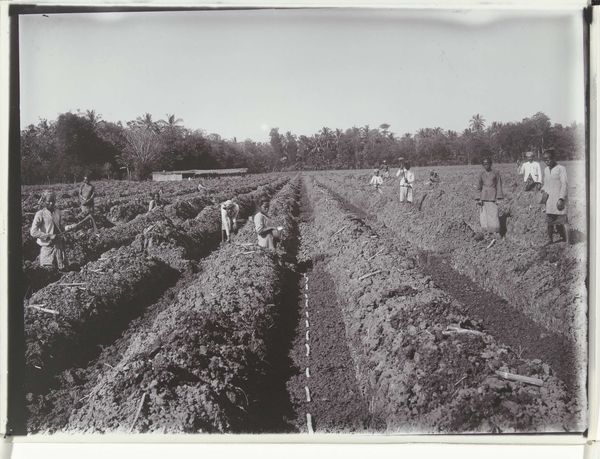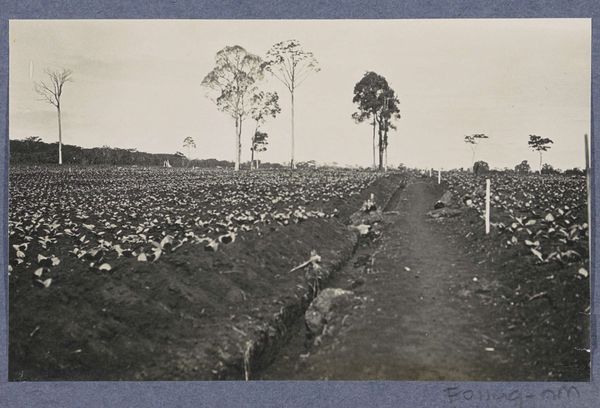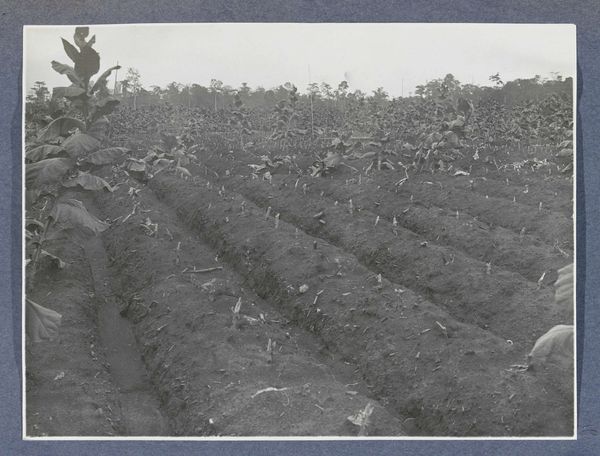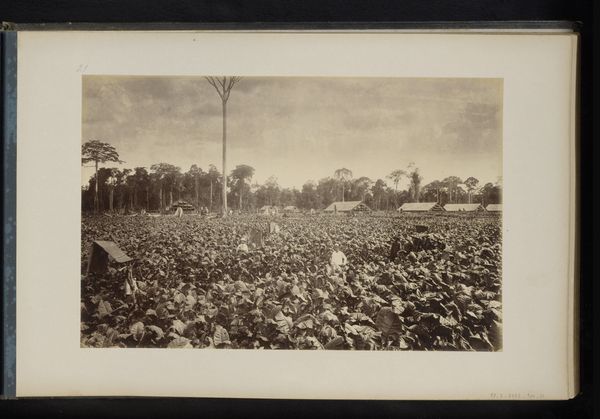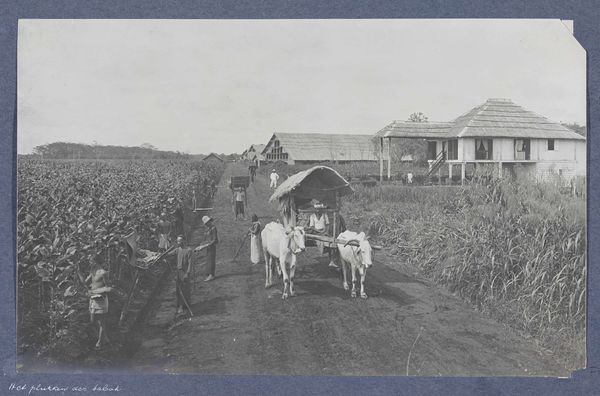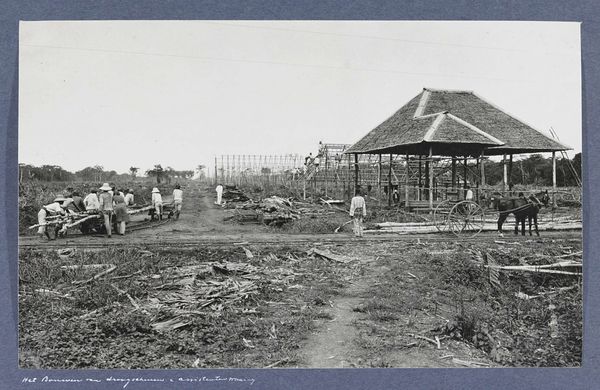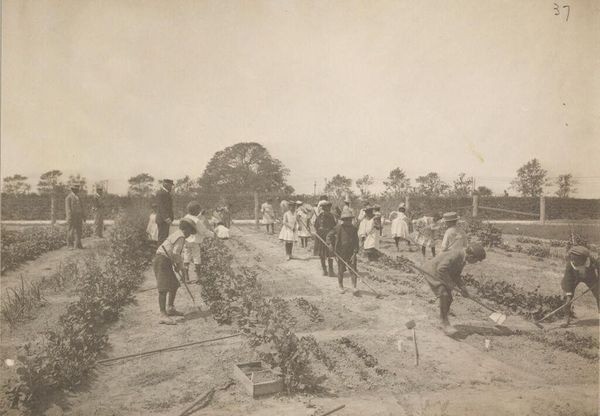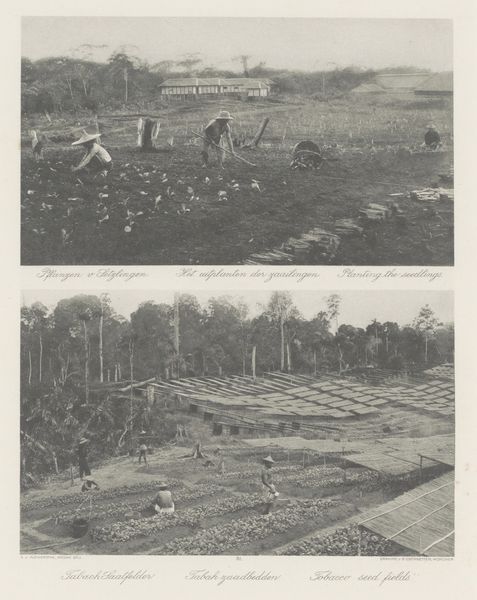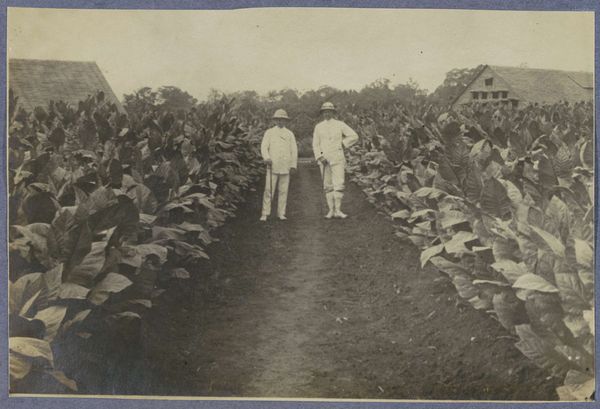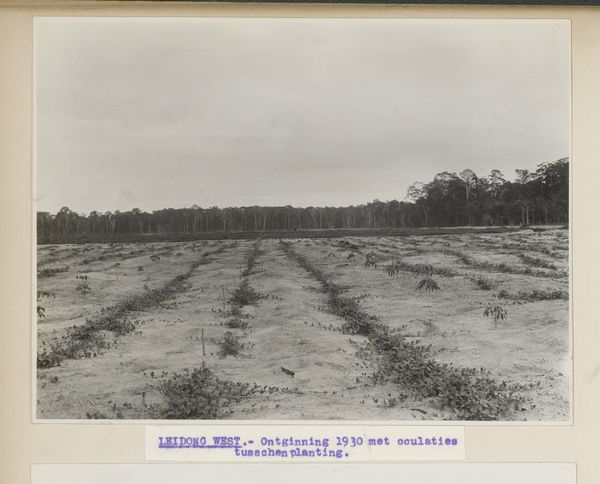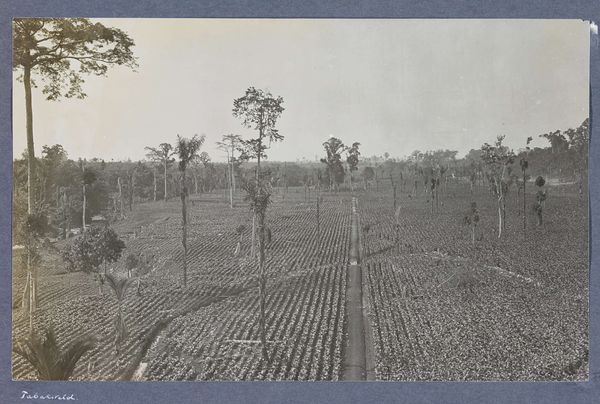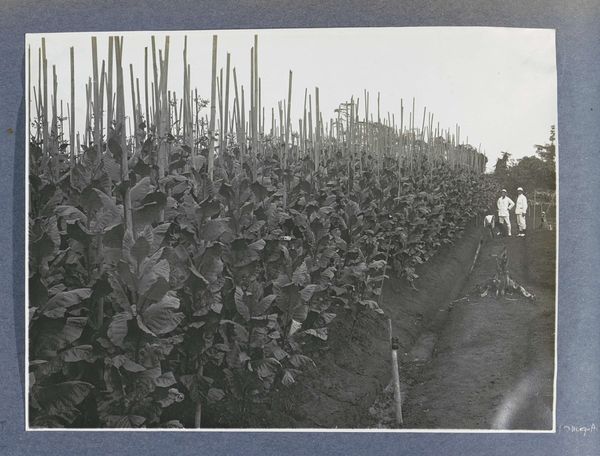
Mannen werkend in tabaksbedden op Sumatra, links een Europese opzichter c. 1900 - 1915
0:00
0:00
carljkleingrothe
Rijksmuseum
photography
#
landscape
#
photography
#
orientalism
#
genre-painting
#
realism
Dimensions: height 178 mm, width 285 mm
Copyright: Rijks Museum: Open Domain
Editor: So, this is "Mannen werkend in tabaksbedden op Sumatra, links een Europese opzichter," a photograph by Carl J. Kleingrothe, probably taken between 1900 and 1915. The composition is very striking; the rows of tobacco plants draw the eye deep into the scene. What really grabs me is the clear visual separation between the workers and the European overseer. What do you see in this piece? Curator: This image presents a potent visual commentary on colonial power dynamics. The sharp contrast in dress, posture, and position underscores the racial and economic hierarchies inherent in the colonial system. We see labor, landscape, and class all interwoven, don't we? The “Orientalist” aesthetic romanticizes the scene, but fails to mask the exploitation at its core. Who benefits from this carefully constructed composition? Editor: That’s a strong point. It's like the photographer is trying to present this picturesque image of labor, but there’s something unsettling about it, knowing the context. The fact that this image would have likely circulated back in Europe further emphasizes that disparity, right? Curator: Exactly. It reinforces a specific narrative about colonial enterprise: civilization, progress, and of course, profit. It is crucial to interrogate these visual representations and the narratives they perpetuate. It prompts us to question how images like these helped solidify colonial power and legitimize exploitation. How do we reconcile appreciating the artistic qualities of the photograph with the disturbing realities it depicts? Editor: That’s something I hadn’t considered before - it is difficult to appreciate an artistic scene when thinking about the cultural contexts. Thank you, I will definitely consider the social message behind artwork now more deeply. Curator: Remember to always consider whose perspective is prioritized in the work and who is marginalized. These investigations really can inform our understanding of the past, while pushing us to have open eyes in the present.
Comments
No comments
Be the first to comment and join the conversation on the ultimate creative platform.
